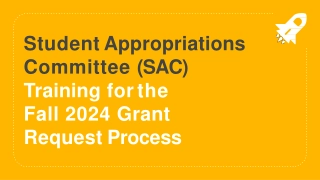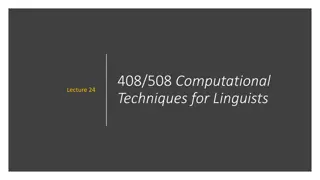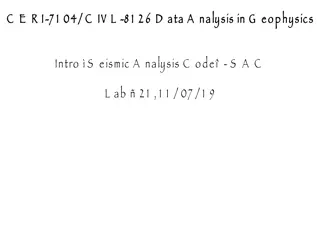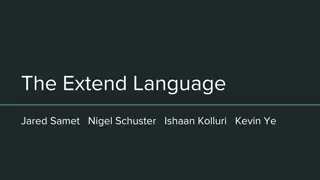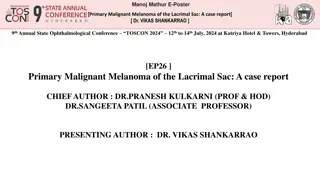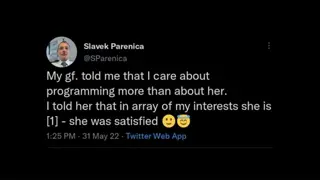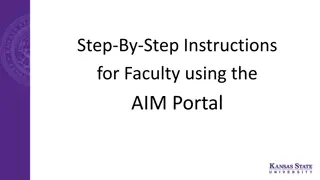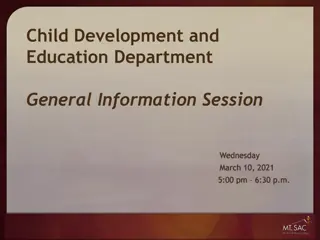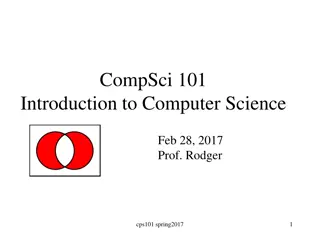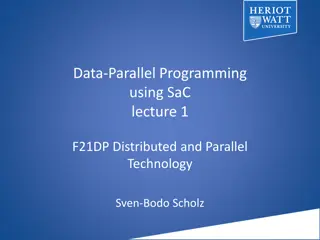
Reasoning about Comprehensions with First-Order SMT Solvers
Explore the paper on the integration of comprehension expressions with automatic program verification, utilizing first-order functions and axiom generation to enhance the capabilities of SMT solvers. The solution involves template functions, induction, use of logical quantifiers, and trigger engineering for effective reasoning in modern programming languages.
Download Presentation

Please find below an Image/Link to download the presentation.
The content on the website is provided AS IS for your information and personal use only. It may not be sold, licensed, or shared on other websites without obtaining consent from the author. If you encounter any issues during the download, it is possible that the publisher has removed the file from their server.
You are allowed to download the files provided on this website for personal or commercial use, subject to the condition that they are used lawfully. All files are the property of their respective owners.
The content on the website is provided AS IS for your information and personal use only. It may not be sold, licensed, or shared on other websites without obtaining consent from the author.
E N D
Presentation Transcript
Reasoning about Comprehensions with First-Order SMT Solvers K. Rustan M. Leino Microsoft Research, Redmond Rosemary Monahan National University of Ireland, Maynooth SAC 2009 9 Mar 2009 Honolulu, HI, USA
Goal Automatic program verification program + specifications automatically lead to proofs/refutations with support for: modern programming language features expressive specifications In this paper: We add support for common comprehension expressions
Challenges Comprehensions are like higher-order bindings Automatic provers use first-order logic
Solution: Template functions Introduce a first-order function for each comprehension template Examples: = f(0, N, a, b)
Solution: Template functions Introduce a first-order function for each comprehension template Examples: = f(0, N, a, b) = g(0, N, a) = g(12, 100, b)
Solution (cont.): Axioms Generate axioms that define the template functions Examples Empty range ( lo,hi,a hi lo f(lo,hi,a) = 0) Induction ( lo,hi,a lo hi f(lo,hi+1,a) = f(lo,hi,a) + a[hi]) Range split ( lo,mid,hi,a lo mid hi f(lo,mid,a) + f(mid,hi,a) = f(lo,hi,a))
Using logical quantifiers with an SMT solver Universal quantifiers are instantiated to produce more ground facts Matching triggers guide the instantiation
Trigger engineering ( a f(0,0,a) = 0) ( lo,hi,a hi lo f(lo,hi,a) = 0)
Trigger engineering ( lo,mid,hi,a lo mid hi f(lo,mid,a) + f(mid,hi,a) = f(lo,hi,a)) ( lo,mid,hi,a lo mid hi f(lo,mid,a) + f(mid,hi,a) = f(lo,hi,a))
Implementation, experiments Implementation in Spec# sum, product, count, min, max Verification of several examples from the Dijkstra & Feijen textbook Teaching
Performance Program Boogie 2 + Simplify 0.142 0.147 0.136 0.190 0.125 11.3 24.5 18.0 27.7 Boogie 2 + Z3 v. 1.3 0.044 0.047 0.056 0.048 X 23.7 > 1200 11.6 11.75 Boogie 2 + Z3 v.2 0.045 0.042 0.047 0.043 0.118 1.62 723 164.7 94.2 Sum0 Sum1 Sum2 Sum3 Factorial CoincidenceCount0 CoincidenceCount1 CoincidenceCount2 MinSegmentSum* *) /inductiveMinMax:4
Conclusions Higher-order features can be usefully encoded in first-order logic for SMT solvers Good trigger engineering is crucial Read this paper! Future work Support general -expressions, collection comprehensions Verify more programs Download Spec# and teach http://research.microsoft.com/specsharp

